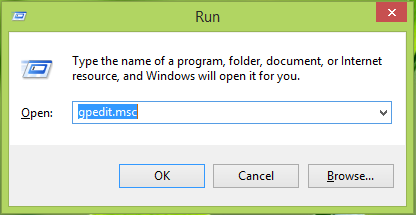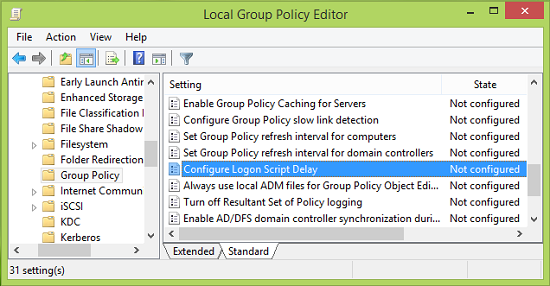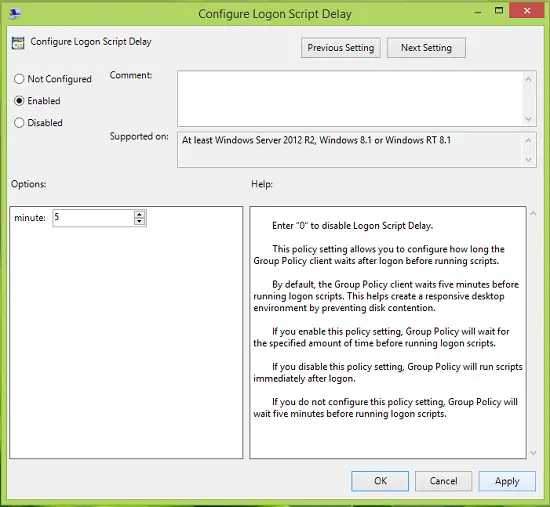In Windows 11/10, as far as Group Policy Objects are concerned, Microsoft has made significant changes to improve system performance. Previously, we told you about the Group Policy Caching to speed up the login process of the system. Today, in this article, we’ll discuss the way to delay the logon script after the user has been logged in to the system.
When you are signed into the machine, logon scripts like registry changes, drive manipulations, and user configuration scripts become active immediately. So if these scripts have any issues in executing themselves, they won’t allow you to get inside the system.
In my opinion, issues like Group Policy Client service failed the logon, can be avoided using the logon script delay setting. Allowing logon script delay on the other side will decrease the contradiction between various logon scripts running and the other tasks, which occur after signing into the system. It is the Task Manager, which confirms that the Windows Script Host does not run until 5 minutes after logging in. Once this wscript.exe starts, the logon script is processed as usual and the mapping of devices starts. Now you know why configuring this logon script delay is important for some system administrators, so get on with it.
Configure Logon Script Delay in Windows 11/10
1. Press Windows Key + R combination, type put gpedit.msc in Run dialog box and hit Enter to open the Local Group Policy Editor.

2. In the left pane, navigate here:
Computer Configuration -> Administrative Templates -> System -> Group Policy

3. Now your Local Group Policy Editor window should resume the one shown above, so on the right-hand side, you have to look for the Configure Logon Script Delay setting which is Not Configured by default. Double-click on this setting to get this:

4. Moving on, in the above window, select Enabled the in the Options section you can specify the minutes Group Policy should wait the logon scripts to run after the user has been logged in.
As is clear from the policy explains that if you select Disabled or Not Configured or Enabled and specify 0 minutes in the Options there, the logon scripts will run with immediate effect.After making your selection, click Apply followed by OK.
You may now close the Local Group Policy Editor and reboot the machine to make changes effective.
Now read: How to Speed up Logon with Group Policy Caching in Windows.
Leave a Reply